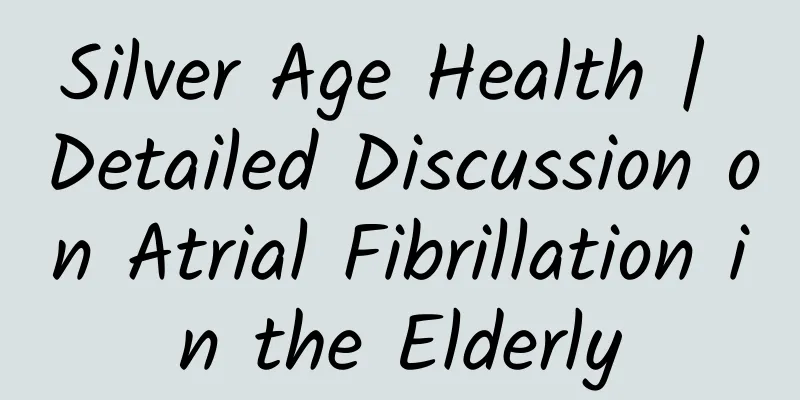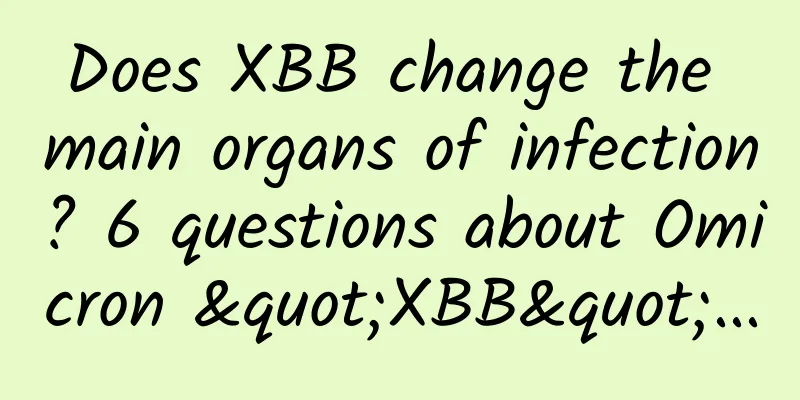Silver Age Health | Detailed Discussion on Atrial Fibrillation in the Elderly

|
Atrial fibrillation is a disease that occurs with aging. Currently, the number of people with atrial fibrillation in China has reached 20 million. As the aging population intensifies, it is estimated that by 2050, a large number of elderly people in China will suffer from atrial fibrillation, of which about 9 million are over 60 years old. In the face of increasingly severe challenges in the diagnosis and treatment of atrial fibrillation in the elderly, the Chinese Journal of Arrhythmias recently released the "Chinese Expert Consensus on the Diagnosis and Treatment of Atrial Fibrillation in the Elderly (2024)", which was carefully written by a team of domestic authoritative experts. It clearly explains the definition, classification and staging of atrial fibrillation, and conducts in-depth discussions on key points such as the clinical characteristics, comprehensive evaluation, comprehensive treatment and comorbidity management strategies of atrial fibrillation in the elderly. ▏Definition, staging, management strategies and screening of atrial fibrillation in the elderly 1. Definition and staging of atrial fibrillation Atrial fibrillation is a supraventricular arrhythmia characterized by rapid, chaotic atrial electrical activity. Clinical atrial fibrillation is atrial fibrillation reflected on the electrocardiogram, while subclinical atrial fibrillation is a high-frequency atrial event that is asymptomatic but detected by implanted cardiac devices or wearable devices. The risk period of atrial fibrillation lies in the presence of various risk factors, such as obesity, lack of exercise, drinking, hypertension, sleep apnea syndrome, diabetes, etc., while the early stage of atrial fibrillation is manifested by abnormal structures and electrical activity related to atrial fibrillation. Paroxysmal atrial fibrillation, persistent atrial fibrillation, long-term persistent atrial fibrillation and permanent atrial fibrillation represent different durations of atrial fibrillation. In combination with the staging of atrial fibrillation, risk factors should be actively corrected. During the atrial fibrillation period, changes in atrial fibrillation load should be continuously monitored and appropriate stroke prevention and treatment and symptom management should be given. 2. Management Strategy With the advancement of aging, the incidence of atrial fibrillation in the elderly population is increasing year by year. In the comprehensive assessment of the elderly, comorbidity management should be strengthened, the risk of thrombosis and bleeding should be controlled, and compliance with anticoagulant therapy should be improved to reduce atrial fibrillation and its complications. In terms of atrial fibrillation screening technology, based on research evidence on the application of wearable device technology, we recommend the use of smart devices such as photoelectric volume pulse wave or single-lead/multi-lead electrocardiogram for atrial fibrillation screening in the elderly population, especially those with sleep apnea, hypertension, diabetes, etc. In addition, the use of an atrial fibrillation integrated management pathway is recommended to reduce the mortality rate of elderly patients with atrial fibrillation. Integrated management software supported by proven mobile technology will assist in the management of atrial fibrillation in the elderly and become a management tool that prioritizes clinical benefits. 3. Diversified screening methods In addition to management strategies, we also have a variety of screening methods to choose from. Photoplethysmography (PPG) is a non-invasive detection technology that can monitor vascular pulsation information in real time. It has the advantages of being simple, easy to use, and able to monitor in real time. It is one of the ideal choices for atrial fibrillation screening. Single-lead/multi-lead electrocardiograms can detect atrial fibrillation by capturing changes in the electrical activity of the heart, and are one of the commonly used screening methods in clinical practice. Accelerometers and sound monitoring are also commonly used atrial fibrillation screening methods. They can capture abnormalities in atrial activity in different ways, thereby detecting atrial fibrillation early. With the development of science and technology, more advanced screening methods are expected to appear in the future. ▏Evaluation of atrial fibrillation in the elderly 1. Thrombotic risk assessment According to the latest "Guidelines for Elderly Atrial Fibrillation", patients with atrial fibrillation should use the CHA2DS2-VASc score to assess the risk of thrombosis/embolism. High-risk patients need to take appropriate anticoagulant therapy, while low-risk patients can consider non-drug treatments such as antiarrhythmic drugs. Bleeding risk assessment The HAS-BLED score is a commonly used tool to assess the risk of bleeding during anticoagulation in patients with atrial fibrillation. A score of ≥3 indicates a high risk of bleeding and should be given special attention. In addition, regular blood routine tests and coagulation function tests should be performed to promptly detect and treat potential bleeding risks. 3. Assessment of cardiac structure and function Patients with atrial fibrillation should undergo transthoracic echocardiography (TTE) to evaluate structural heart disease, atrial and ventricular size, left ventricular systolic function, and the presence of mural thrombus, etc. For patients who are planning to undergo atrial fibrillation cardioversion, radiofrequency ablation, left atrial appendage closure, etc., transesophageal echocardiography (TEE) is recommended, as it has better sensitivity and specificity than transthoracic echocardiography for atrial structure, blood flow, function measurement, and monitoring of left atrial thrombus. IV. Comprehensive Assessment It is recommended to conduct disability assessment, frailty screening, gait abnormality and fall risk assessment, cognitive function assessment, renal function, nutritional status, eating and weight changes, depression, comorbidity and multiple medication assessment, etc. Elderly patients with atrial fibrillation should undergo a comprehensive assessment to better understand their health status and prevent the occurrence of stroke and thrombotic events. In addition, for the elderly population, attention should be paid to their nutritional status, weight changes, depression, etc., and corresponding support and treatment should be provided. In summary, it is recommended to conduct a comprehensive and integrated assessment of elderly patients with atrial fibrillation to better prevent the occurrence of thrombotic events and take appropriate treatment and care measures. ▏Treatment of elderly patients with atrial fibrillation 1. Ventricular rate and rhythm control therapy is crucial in the treatment of atrial fibrillation We should strive to control the ventricular rate to keep it at an appropriate level and keep the patient in sinus rhythm. For patients with a high resting heart rate, the initial goal should be set at less than 110 beats per minute, and this value can be further reduced to 60-80 beats per minute for patients with significant symptoms or concomitant heart failure. 2. Drug treatment In terms of the choice of drug treatment, if the ventricular rate of a patient with atrial fibrillation is too fast, the first choice is to control the ventricular rate. However, when drug intervention is ineffective, we can consider atrioventricular node ablation combined with pacing therapy. Regarding follow-up during drug treatment, we should pay close attention to the side effects of antiarrhythmic drugs and perform regular electrocardiograms. After that, depending on the patient's stability, the follow-up should be gradually extended to every 1 to 3 months. The follow-up content should include the effectiveness and safety of the drug, liver and kidney function and electrolytes, cardiac function, comorbidities, and whether the heart rate/rhythm management strategy needs to be adjusted. 3. Cardioversion In addition to drug therapy, we have other non-drug heart rate and rhythm control methods. Cardiac cardioversion is an important means of treating atrial fibrillation and is suitable for patients with hemodynamic instability, myocardial ischemia or combined with preexcitation syndrome. Before cardioversion, sedation treatment and continuous monitoring of blood pressure and blood oxygen are required. We recommend the use of direct current synchronized cardioversion with an energy setting of 100~200J. For the elderly, the risk of cardioversion is higher, so rescue drugs and pacing preparations should be prepared. 4. Pacemaker Cardiac pacing therapy is an option worth considering in elderly patients with atrial fibrillation and bradycardia or heart failure. For patients whose heart function is still in grade III to IV (NYHA classification), whose QRS duration is ≥130ms, and who use appropriate methods to ensure biventricular pacing or conversion to sinus rhythm, cardiac pacing therapy should be considered to improve symptoms and reduce mortality. 5. Catheter Ablation We should fully evaluate its benefits and risks. For elderly patients with symptomatic atrial fibrillation or symptomatic bradycardia during conversion of paroxysmal atrial fibrillation to sinus rhythm without other pacing treatment indications, we recommend ablation therapy. For patients with contraindications to anticoagulant therapy, catheter ablation should not be chosen. At present, we recommend that the indications for catheter ablation in elderly patients with atrial fibrillation include: 1. Symptomatic, paroxysmal atrial fibrillation, poor response or intolerance to at least one class I or class III antiarrhythmic drug; 2. Symptomatic, persistent atrial fibrillation, ineffective or intolerant to antiarrhythmic drugs; 3. Patients with recurrent symptomatic or paroxysmal atrial fibrillation who are unwilling to receive long-term antiarrhythmic drug treatment; 4. Symptomatic bradycardia occurs when paroxysmal atrial fibrillation is converted to sinus rhythm, and there are no other indications for pacing therapy; 5. For patients with long-term persistent atrial fibrillation, antiarrhythmic drugs are ineffective or cannot be tolerated; 6. Patients with symptomatic, persistent atrial fibrillation are unwilling to receive long-term drug treatment. 6. Surgery There are many surgical options for the surgical treatment of atrial fibrillation, such as maze surgery, minimally invasive ablation, and internal-surgical hybrid surgery. As for the treatment of the left atrial appendage, there is currently insufficient research evidence. Considering the complex thrombotic risk of elderly patients, we do not recommend the routine use of left atrial appendage occlusion. 7. Antithrombotic therapy For elderly patients with atrial fibrillation, the risk of thrombosis is complex, including cardiac thrombosis and arterial thrombosis. Patients with high-risk conditions such as risk of falls, heart failure, chronic kidney disease/liver disease, and malignant tumors can benefit from anticoagulant therapy. However, anticoagulant therapy has problems such as poor compliance and insufficient anticoagulant dose. Therefore, it is recommended to strengthen the follow-up management of anticoagulant therapy and monitor the intensity and safety of anticoagulation. Antithrombotic strategies need to balance the risk of thromboembolism and the risk of antithrombotic bleeding. Patients with atrial fibrillation should receive long-term anticoagulant therapy. In the management of anticoagulant drugs, follow-up management of anticoagulant therapy should be strengthened, bleeding risk assessment should be performed, and reversible bleeding risk factors should be identified and corrected. At the same time, liver and kidney function should be monitored and the dose should be adjusted. In addition, the cognitive function of elderly patients should be evaluated, patient education should be strengthened, and missed or repeated medications should be avoided to improve treatment compliance. During the treatment process, the balance between thromboembolic risk and antithrombotic bleeding risk should be taken into account to ensure that patients obtain the best treatment effect. 8. Treatment of combined ischemic stroke 1. Ischemic stroke The mortality rate of acute ischemic stroke and bleeding in elderly patients is higher than that in young patients, but thrombolytic therapy can still benefit them. In the case of sudden acute stroke during the use of anticoagulants, whether to perform thrombolysis in the early stage depends on the blood drug concentration. If the last medication is within 24-48 hours, or the anti-Xa factor plasma level is less than 30 ng/ml 4 hours after taking the medication, or after the anticoagulation intensity is reversed with the use of specific reversal agents, thrombolysis can be considered. However, the risk of recurrent stroke after acute stroke is extremely high, and factors such as the size of the infarct and hemorrhagic transformation of cerebral infarction should be weighed. Unless there is a clear indication (such as recent coronary artery or carotid artery stent implantation), aspirin should be discontinued when starting or restarting anticoagulation therapy for patients with atrial fibrillation and ischemic stroke. 2. Ischemic stroke combined with carotid artery stenosis Elderly patients with atrial fibrillation have a higher risk of cardioembolic stroke combined with large artery thrombosis. For such patients, if carotid endarterectomy is performed, aspirin should be used before and after the operation, and aspirin should be discontinued after anticoagulants are resumed. If carotid stent implantation is performed, antiplatelet and anticoagulant therapy should be considered in the near future, and patients with stable lesions can receive anticoagulant therapy alone. For patients with atrial fibrillation who have asymptomatic atherosclerosis or stenosis of the internal carotid artery and/or intracranial artery, there is currently no evidence that antiplatelet therapy is needed. 3. Hemorrhagic stroke Before anticoagulation treatment, patients should be screened for cerebral amyloid deformation and cerebral microbleeds. If the condition is stable, anticoagulation treatment can be restarted after 2 to 4 weeks. It should be noted that the recovery time may vary from patient to patient and needs to be determined based on individual circumstances. ▏Management of comorbidities of atrial fibrillation in the elderly It is crucial to actively control cardiovascular risks and comorbidities such as blood pressure, blood sugar, and sleep apnea in elderly patients with atrial fibrillation. We should encourage lifestyle interventions, including screening for polypharmacy and reducing inappropriate medication. Below is a series of management strategies. 1. Actively control blood pressure Active control of blood pressure is the key to the prevention and treatment of hypertension combined with atrial fibrillation. Especially for patients who are receiving anticoagulant therapy, it is recommended to control blood pressure to <140/90mmHg. For the elderly, blood pressure should be further controlled to <150/90mmHg. In this way, we can prevent new atrial fibrillation and recurrence of paroxysmal atrial fibrillation. In addition, it is also crucial to assess the risk of thrombosis and bleeding and give individualized anticoagulant treatment plans. Depending on the situation, "rhythm" control or "ventricular rate" control should be given. For patients with persistent atrial fibrillation, radiofrequency ablation should be considered when drug therapy is ineffective or symptomatic. For the control target of glycated hemoglobin, patients who are not using drugs with a higher risk of hypoglycemia should reach <8.0%, while patients who are using drugs with a higher risk of hypoglycemia should reach 7.5%~8.0%, and hypoglycemia should be avoided. Principles of hypoglycemic treatment Choose drugs with a lower risk of hypoglycemia, taking into account convenience and patient compliance. In addition, the overall condition of diabetic patients should also be considered, including cardiac function, complications and concomitant diseases. While reducing the risk of multiple medications, the benefits and risks should be weighed, overtreatment should be avoided, and attention should be paid to the status of liver and kidney function. 3. Anticoagulant therapy for elderly patients with atrial fibrillation and diabetes The principle is the same as that of non-diabetic patients. Patients with atrial fibrillation and diabetic retinopathy can receive anticoagulation therapy if they meet the anticoagulation indications. However, for patients who have developed bleeding complications, anticoagulation therapy needs to be used with caution after individualized evaluation. 4. Lifestyle 1. Obesity Maintaining an ideal body weight (BMI 20.0-23.9 kg/m2) is important. At the same time, abdominal obesity should be corrected, with the abdominal circumference of men being <90 cm and that of women being <85 cm. However, elderly patients should pay attention to balanced nutrition and avoid excessive weight loss. 2. Alcohol Problems We recommend that elderly patients with atrial fibrillation abstain from alcohol. 3. Healthy diet The elderly are encouraged to consume a variety of fresh vegetables, fruits, fish, soy products, grains, skim milk and other foods rich in potassium, calcium, dietary fiber and polyunsaturated fatty acids. 4. Exercise regularly Elderly people can do moderate regular exercise, mainly aerobic exercise and resistance training. However, we do not recommend strenuous exercise for the elderly. 5. Prevent falls Patients with atrial fibrillation who have a history of falls or are at high risk of falls should generally receive benefits of anticoagulation that outweigh the risks, especially those who use anticoagulants. For such patients, active preventive measures should be taken, including individualized assessment and correction of factors that increase the risk of bleeding with anticoagulation, and strengthening strength and balance training to avoid falls. Finally, we should screen elderly patients with atrial fibrillation for polypharmacy and reduce inappropriate medications. These are our management strategies, which are designed to help elderly patients with atrial fibrillation manage their cardiovascular risks and comorbidities and improve their quality of life. (Picture from the Internet) |
<<: Can you eat the intact parts of rotten fruit?
Recommend
What kind of mask standard is suitable? How to read the mask standard number
We all know that masks are a kind of protective p...
How much does a Heytea Laba Multigrain Bun cost? Is the Heytea Laba Multigrain Bun delicious? How does it taste?
Heytea launches many flavors of desserts and Euro...
Is bleeding normal one year after menopause?
We all know that women will go through menopause ...
Why does stomach hurt during pregnancy?
Many women feel stomach pain during pregnancy, wh...
What should I do if my vaginal discharge is yellow and has a strong odor?
The situation of yellow leucorrhea with a strong ...
What are the ingredients in lotus seed porridge? Benefits and functions of lotus seed porridge
Lotus seeds are the dried mature seeds of the lot...
Is the uterus enlarged?
Under normal circumstances, a woman's uterus ...
What is the reason for menstruation to be delayed for a week and with little amount?
The normal duration of menstruation is generally ...
Plaque is the main cause of cardiovascular and cerebrovascular diseases. Do three things every day to help you stay away from plaque.
Atherosclerosis is a common cause of a series of ...
The harm of sanitary napkin fluorescent agent
We all know that women's periods are their go...
What are the advantages and disadvantages of eating dried sweet potatoes frequently? What kind of food is dried sweet potatoes?
Dried sweet potatoes, also known as sweet potato,...
What should I do if I get pregnant again three months after a caesarean section?
For female friends, cesarean section is extremely...
Can eating less sugar reduce the risk of cardiovascular disease? Research shows: It depends on what kind of sugar you eat
Written by: Nan An It’s common to hear that “eati...
Is body odor hereditary in some women?
Generally speaking, as patients with body odor, t...
Should I treat menopause at the age of 43?
Women will experience amenorrhea when they reach ...









